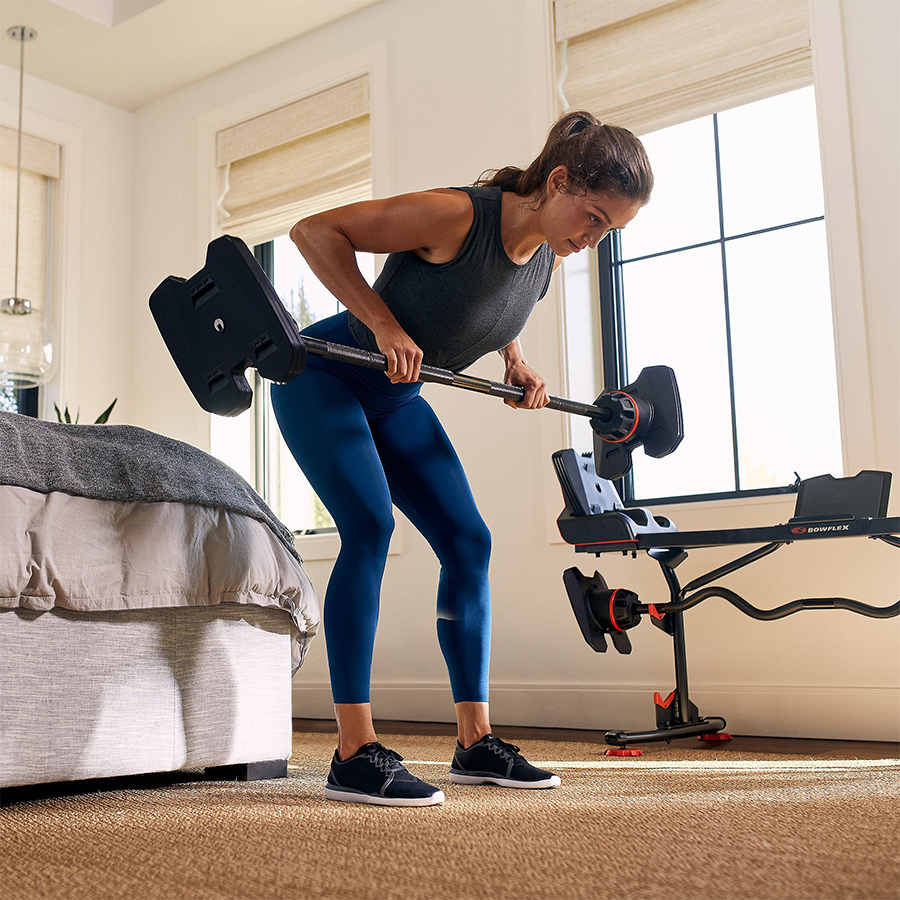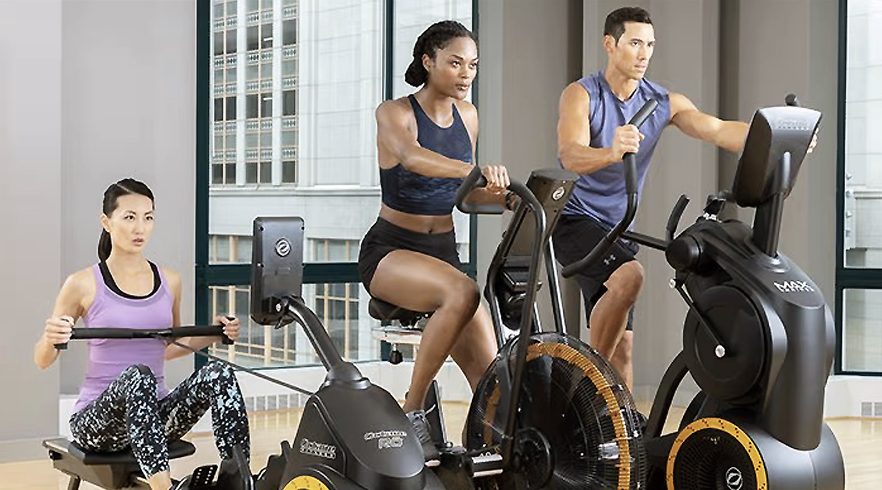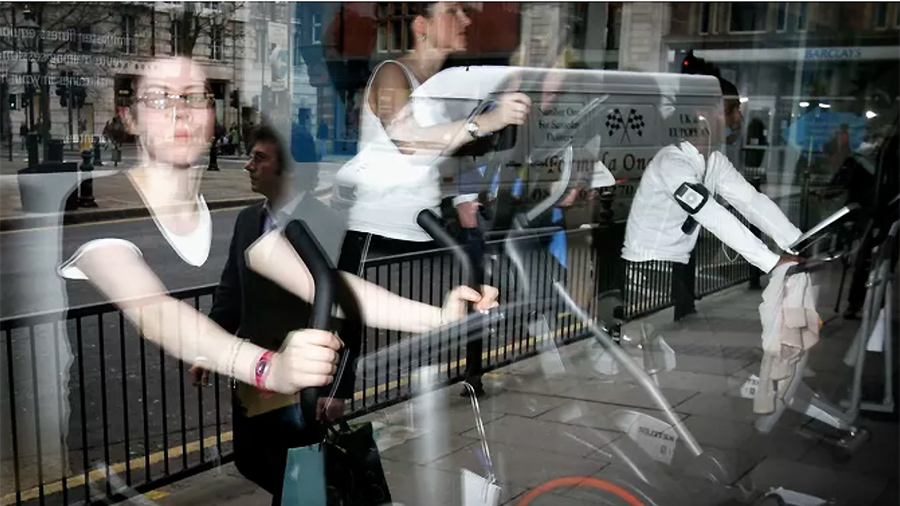Shares of exercise-equipment maker Nautilus, Inc. touched a 52-week low on the New York Stock Exchange Tuesday after the company reported a loss in the fourth quarter and forecasted an operating loss in the current fiscal year as it navigates a moderating demand for at-home fitness equipment and bloated retail inventories.
On Tuesday, shares closed at $2.00, down 50 cents or 20 percent. The stock’s 52-week range is between $1.85 and $18.58.
On a conference call with analysts, Jim Barr, CEO, said recent findings reinforced Nautilus’ view that long-term changes in consumer habits favoring at-home fitness would persist.
Pre-pandemic, about 40 percent of consumers who deem fitness essential to their daily lifestyle worked out at home. Two years later, those same consumers are working out at a gym at close to 70 percent, and the rate has held steady for an entire year.
“Consumers have adopted a hybrid model for fitness, similar to what they have done for work locations,” said Barr. “In our new target consumer segment, which we call enthusiastic cross-trainers, the importance of home workouts is even more pronounced, with nearly 90 percent of them working out at home.”
He said this target customer is building home gyms with multiple modalities and are becoming more brand loyal.

“As we predicted early in the pandemic, the home industry more than doubled to its peak, then regulated from its high point and has trended down to its new normal level,” said Barr. “We continue to expect the natural demand settle point will be well above pre-pandemic. We believe that these long-term trends, coupled with our well-known brands, strong product portfolio, differentiated connected fitness offering, and omnichannel go-to-market position, will serve us well to capture the elevated opportunity.”
However, Barr said near-term demand is uncertain. He elaborated, “Over the past several weeks, we’ve seen an uncommon and unexpected combination of factors conspire to slow top-line momentum. We have not seen normal retail orders due to their heavy inventory positions. Fearful of not having enough inventory after holiday 2020, retailers ordered early and at elevated levels beginning in our Q1 last year. Despite solid demand and seasonal sell-through in the most recent fitness season, some retailers still have more inventory to sell through. We are monitoring these inventory levels and sell-through rates and are assisting our retailers in working through their inventory to enable reorders later in the year. We have also experienced a rapid deterioration of the macroeconomic environment with elevated inflation and interest rates and declining consumer confidence in stock market performance. Add in the COVID resurgence in China and the war in Europe, and the current situation is volatile and challenging.”
In the fourth quarter ended March 31, sales fell 41.9 percent to $119.7 million. Nautilus noted that the year-ago quarter marked the highest quarterly sales in the company’s history. Compared to the first quarter of 2020, sales were up 41 percent, or a 19 percent two-year CAGR (compound annual growth rate), excluding Octane Fitness. Nautilus sold Octane to True Fitness Technology for $25 million in October 2020.
The year-over-year decline was attributed to lower demand for cardio products that was partially offset by strong sales of SelectTech weights and benches compared to the same period in 2021.
Gross margins in the latest quarter were more than halved to 17.5 percent compared to 38.4 percent last year. The 20.9 percent point decrease was primarily due to increased product costs, logistics, discounting (16 basis points), and increased investments in its JRNY online platform (5 basis points).
Operating expenses increased 8.9 percent to $42.9 million, primarily due to a $5.1 million increase in JRNY investments and $2.5 million more in advertising. Total advertising expenses were $14.0 million versus $11.5 million last year. As a percent of sales, operating expenses increased to 35.8 percent from 19.1 percent due to lost sales leverage.
The operating loss was $21.9 million compared to an operating income of $39.7 million last year, primarily due to lower gross profit and higher operating expenses.
The net loss was $18.2 million, or 58 cents a share, compared to a net income of $30.4 million, or 93 cents, last year.
Direct Segment Revenues Decline 41 Percent
By segment, sales in the Direct Segment in the quarter were $59.8 million, a decline of 41.1 percent versus last year, and up 27 percent, or a 13 percent CAGR, compared to the same period in 2020. The net sales year-over-year decrease was primarily driven by lower cardio sales.
Cardio sales in the Direct Segment declined 44.2 percent versus last year and were up 9 percent, or a 4 percent CAGR, compared to the same period in 2020. Lower sales were primarily driven by lower bike demand.
Strength product sales dropped 34.3 percent versus last year and increased 83 percent, or a 35 percent CAGR, compared to the same period in 2020. Lower sales this quarter were primarily driven by lower sales of Bowflex Home Gyms, partially offset by increased sales of SelectTech weights and benches.
The Direct segment ended the quarter with an $800,000 backlog as of March 31, 2022, as product demand declined. These amounts represent unfulfilled consumer orders net of current promotional programs and sales discounts.
Gross profit margin in the Direct Segment was 19.3 percent versus 50.3 percent last year. The 31.0 basis point decrease in gross margin was primarily driven by increased product costs, logistics and discounting (-24 basis points) and increased investments in JRNY (-7 basis points).
Direct Segment contribution loss was $11.7 million compared to segment contribution income of $27.8 million, or 27.4 percent of sales, last year. The decline was primarily driven by lower gross profit and increased investments in media and JRNY. Advertising expenses were $11.3 million compared to $10.1 million last year.

Retail Segment Sales Drop 43 Percent
Retail segment sales in the quarter were $58.7 million, down by 43.2 percent versus last year. Excluding sales related to Octane, net sales were up 60 percent, or a 27 percent CAGR, compared to the same period in 2020. Retail segment sales outside the U.S. and Canada were down 76 percent versus last year. Excluding sales related to Octane, net sales outside the U.S. and Canada were up 4 percent, or a 2 percent CAGR, compared to the same period in 2020.
The year-over-year decrease in net sales was primarily driven by lower cardio sales, partially offset by robust sales of SelectTech weights and benches. Cardio sales declined by 67.5 percent versus last year.
Excluding sales of the Octane brand, cardio sales were down 15 percent, or a negative 8 percent CAGR, compared to the same period in 2020.
Lower bike sales primarily drove lower sales this quarter.
Strength product sales grew by 9.8 percent versus last year and were up 277 percent, or a 94 percent CAGR, compared to the same period in 2020, led by the popular SelectTech weights and benches.
As of March 31, 2022, the Retail segment’s backlog totaled $32.1 million compared to $178.6 million as of March 31, 2021, as retailers are now ordering closer to need as compared to last year. These amounts represent customer orders for future shipments and are net of contractual rebates and consideration payable to applicable Retail customers.
Gross profit margins were 14.0 percent compared to 26.0 percent last year. The 12.0 basis point decrease in gross margin was primarily driven by increased product costs, logistics and discounting.
Retail segment contribution income was $0.7 million, or 1.2 percent of sales, compared to $20.3 million, or 19.7 percent of sales, last year. The decline was primarily driven by lower gross profit.
For the full year ended March 31, sales were $589.5 million, down 11.3 percent compared to $664.9 million last year. Excluding sales related to the Octane brand, net sales were down 9 percent compared to last year and up 112 percent, or a 46 percent CAGR, compared to the twelve months ended March 31, 2020.
In the Direct segment, sales for the twelve-month period were $221.7 million, down 24.9 percent versus last year and up 85 percent, or a 36 percent CAGR, compared to the same period in 2020.
In the Retail segment, sales were $364.1 million, down 0.5 percent versus last year. Excluding sales related to Octane, net Retail segment sales were up 5.0 percent versus last year and up 136 percent, or a 54 percent CAGR compared to the same period in 2020.
The operating loss was $25.3 million compared to an income of $118.1 million last year. The decrease was primarily due to lower gross profit and higher operating expenses. The net loss was $22.4 million compared to an income of $88.1 million last year.
Improving Trend Forecasted In Second Half Of FY23
For FY23, Nautilus expects to return to a more typical pre-pandemic seasonality, with the second half of the year contributing more of the full year’s revenue. As a result, it expects the first fiscal quarter ending in June to represent the low point for the year, followed by the second fiscal quarter ending in September being the second-lowest. The third-quarter ending in December is expected to be the strongest, with the fourth quarter expected to be slightly lower than the third quarter.
For the first quarter, sales are projected to be between $45 million and $55 million. At the mid-point, compared to the same period in Fy20, this guidance represents a decline of 13 percent or 4 percent growth excluding Octane. Q1 revenue guidance reflects weaker retail demand as partners work through their elevated inventory levels. Nautilus expects a Q123 adjusted EBITDA loss of between $22 million and $27 million.
For the full fiscal year, revenue is expected to be between $380 million and $460 million, down between 22 percent and 36 percent from $589.5 million from the prior year. At the mid-point, compared to the same period in FY20, this guidance represents 32 percent growth or 10 percent CAGR or 52 percent growth or 16 percent CAGR excluding Octane. The full-year adjusted EBITDA loss is expected to be between $25 million and $35 million, compared with a loss of $3.3 million in fiscal 2022.
Given the impact of elevated inventory levels at its retail partners, the company expects the second half of the year to represent between 65 percent and 70 percent of full-year sales, slightly higher than the pre-pandemic second half seasonality of approximately 60 percent.
Gross margins for the second half of the year are expected to be in the range of 27 percent to 30 percent. The improvements versus last year are driven by lower inbound freight and demurrage fees and the reduction in the logistics facility’s footprint. Nautilus intends to close one of its distribution centers when the lease expires in the fall of 2022 and will not be renewing the leases of some storage locations.
Given higher anticipated sales levels in the second half of the year, improved gross margins and plans to flex sales and marketing expenses in line with sales, it expects to deliver positive adjusted EBITDA for the second half of FY23.
Photos courtesy Bowflex, Octane Fitness, Getty
















